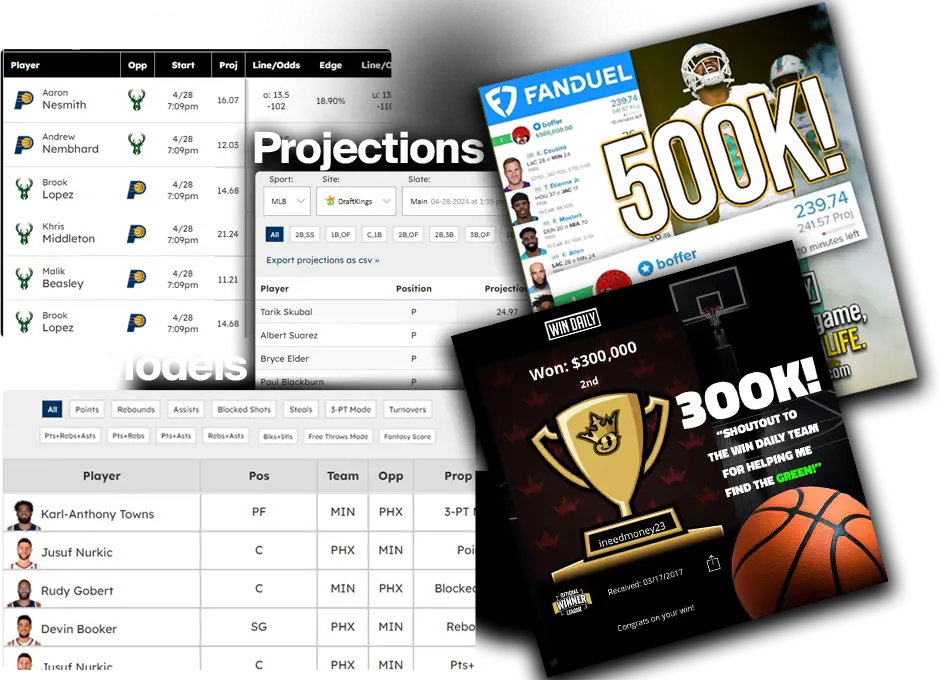Hello everybody, and welcome back to ‘Tee 2 Green,’ a new article that I will be producing for Win Daily Sports weekly to give some extra insight into the DFS world of golf. My focus will be to discuss, decipher and dissect some of my preferred targets throughout the various price ranges, and I will always provide my opinion with a data-intensive outlook that you can see first-hand if you use the weekly model that I provide free of charge. You can find that here.
El Camaleon Golf Course
7,100 Yards – Par 71 – Greens: Paspalum
The best way to describe El Camaleon Golf Course would be as an exposed oceanside track that features jungle terrain and swampland. That is a unique mixture since you get three different textures with that description, but golfers will need to traverse various hazards, including those of the architectural variety.
There are very few locations on the PGA Tour where distance doesn’t hold an advantage over precision, but nearly 65 percent of all top-10 finishers during the previous eights years have been shorter than average off the tee. It’s not to say that distance is a negative, but accuracy players will undoubtedly see a boost. One of the reasons for that has to do with golfers clubbing down to avoid the plethora of hazards that come into play. The rough is virtually non-existent, but the misses do compound.
While scoring might be easy for the winners, this track isn’t a given! The point gets enhanced when we dive a little deeper into the actual metrics, as El Camaleon ranks near the top-10 on tour every season in birdie or better percentage and double bogey or worse rate. Mistakes will be made when balls get sprayed, and golfers can start to feel as if they are trapped in a tiny bubble once things begin to go wrong. The greens typically register between a 10-11 on the Stimpmeter, which is extremely slow, and we receive that set up so the surface doesn’t get away from the grounds crew if winds do play a factor. Overall, golfers that can find fairways off the tee and pinpoint their irons from a shorter proximity range should be at an advantage, and the ability to play on a slow surface should only help matters.
- Weighted Ball-Striking (25%) – That is something I geared heavily towards accuracy when making my total driving stat, and I then took a smaller percentage on GIR and added that to my total driving to come up with a ball-striking number.
- Weighted Proximity (15%) – That encompassed all proximity values, but 60% of the weight came from 0-150 yards.
- Weighted Scoring (10%) – As I previously noted, El Camaleon ranks inside the top-10 in both birdie or better percentage and double bogey or worse rate. I wanted to find golfers that would not only score but also protect against a big number.
- Weighted Par-Four (15%) – A lot of these holes are going to be your most difficult, and I did come back around on adding a percentage of bogey avoidance here to account for whatever I lost when doing a heavier breakdown of birdies over bogeys in the weighted scoring
- Weighted Par-Five (12.5%) -These are reachable in two and have been the number one decider between the three par totals in figuring out top-10 finishers over the last few years.
- Weighted Slow-To-Average Greens (12.5%) – That is a mixture of strokes gained total and putting on a slower surface. Some notable top-10 finishers there were Hadwin, Hatton, Matt Jones, Justin Thomas, Kuchar, Seamus and Ancer.
- Strokes Gained Total At Courses Under 7,200 Yards (10%) – I considered adding in scoring at easy courses to along with it, but the mistakes compound at the track, making how someone plays at a shorter track more relevant.
High-Priced DraftKings Players ($10,000+)
Justin Thomas (11,200) – Justin Thomas was the number one golfer in my model from an overall rank sense. Thomas did drop to fifth when looking for just upside, which is a little discouraging for the best player in the field, but most of that comes down to him being inaccurate off the tee. Thomas should be able to club down, and I think Andy Lack was spot on when he tweeted eight of Thomas’ 14 PGA Tour wins have come between October and January. The American is the number one golfer in this field when given a slower surface, and as would be expected, the 28-year-old ranks first in my weighted proximity category. A lot is pointing in his direction when we remove one trait he might be able to get around because of the length he can carry his irons, and it is hard to ignore his potential to lap the field if he is dialed-in.
Viktor Hovland ($10,900) – I have been saying for the last few months that Viktor Hovland is a hot putter away from winning again. Hovland ranks third in my upside model and has averaged 3.3 strokes with his irons over his last 10 trackable starts. The driver has been just as good, totaling positive strokes in 21 of his past 23, and he finally showed some life with his flat stick at the CJ Cup. The 24-year-old tends to run hot-and-cold with that aspect of his game, but he has followed up a positive showing on the greens with another the last four times he has started a new streak.
Abraham Ancer ($10,700) – If you listen to any of my shows regularly, you will know that I am never an Abraham Ancer guy. I find him to be overpriced because of his popularity throughout the industry, but I don’t believe that is the case here this week. Ancer has shown when he likes a particular track that he often keeps the run going, and we see that here with him having produced four top-21 results in a row. Tournaments like this where the top-three golfers in price are also the top-three on my board make it tough to avoid taking a chalky approach, but I believe you can always pivot elsewhere. I don’t mind a stars-and-scrubs strategy in this spot, and you can find yourself in a unique build by taking many different routes.
GPP Pivot – Tony Finau $10,600 – Finau has been erratic at this course with two top-16s and two missed cuts over his last four attempts, but I’ve noticed he performs better on these shorter tests sometimes than the bomb-and-gouge properties. That is not exactly what you would expect, but the data spells it out that way too, ranking fifth in this field at courses under 7,200 yards.
$9,000 Range
Scottie Scheffler ($9,900) – Scottie Scheffler could just as easily have been in the $10,000s if he didn’t provide two questionable showings in Vegas. I’d be more concerned if one factor of his game kept trending in the wrong direction, but this feels to be more of a situation where he just wasn’t clicking on all cylinders. I assume he will put the pieces together soon, and I find it relevant that he is a favorite in head-to-head matchups against Brooks Koepka, Billy Horschel and Tyrrell Hatton.
Favorite Pivots: Patrick Reed ($9,500), Shane Lowry $9,300 -Both are negative for me in price versus rank, but I don’t mind taking shots since it won’t take much for me to get overweight at five percent.
$8,000 Range
Cameron Tringale ($8,900) – If you are trying to figure out a spot to get contrarian, Cameron Tringale looks to be the natural GPP pivot off of Aaron Wise. Tringale’s course form doesn’t give you an idea that his upside might be as high, but the 34-year-old is a different golfer this season than he has been in his career. Tringale ranks fourth in my overall model and inside the top-40 of all weighted statistics.
Matthew Fitzpatrick ($8,800) – Matthew Fitzpatrick is the third-ranked golfer in this field in moderate-to-severe wind and is just a week removed from being the top-priced player on the board at the Bermuda Championship. Fitzpatrick isn’t necessarily a value for me on the surface, but any course that mimics Harbour Town will be one where I give him a second look.
Russell Henley ($8,200) – Russell Henley has been surprisingly bad at the course with two missed cuts and 29th, but as I have said numerous times throughout the week, I am not overly concerned with course history at this particular stop. Despite his popularity, I would use Henley as a GPP-only play because of some of the negative past trends, but he is top-10 in this field when it comes to weighted proximity, ball-striking, bogey avoidance and par-four scoring.
Mito Periera ($8,100) – Consider this a good price for a golfer who has demonstrated a high floor early in his career, and the fact we are getting him at a price tag outside of the top-20 golfers only enhances his ceiling since we don’t need as much upside for him to zoom past his built-in salary cap.
Other Thoughts: Sergio Garcia $8,700 and Maverick McNealy $8,500 are both in in play
$7,000 Range
Seamus Power $7,700 – I know I keep stressing this point, but Seamus Power is an elite statistical golfer and has been for the past year.
Emiliano Grillo $7,500 – It is hard to say much bad about Emiliano Grillo at this track. I don’t love the popularity, but his four top-15 finishes in five tries can’t be ignored.
Ian Poulter $7,500 – Ian Poulter looks to be one of the better contrarian pivots. The Englishman is currently a small favorite over Seamus Power in a head-to-head bet, which is relevant since he is four times less popular. I like playing both but don’t forget to work the Poulter into your builds.
Brian Harman $7,300 – Similar mentality to the concept I just said with Ian Poulter. Brian Harman is -110 versus Emiliano Grillo at ownership projections of two percent versus 14 percent. Once again, find a way to work in both, but there is an opportunity to create leverage to your lineups.
Kevin Streelman $7,200 – I have a proper price on Kevin Streelman being in the mid $8,000s. The American is a positive value for me across the board in all game types, although the real value is coming from his upside in GPPs. Streelman ranked 10th for me from a statistical perspective and is 14th in that weighted proximity range I ran to mimic the event.
Additional Thoughts: Justin Rose $7,900 (GPP), Joaquin Niemann $7,800, Talor Pendrith $7,200, Joel Dahmen $7.000, Brendan Steele $7,000 and Henrik Norlander $7,000 are all in play for me.
$6,000 Range
Chris Kirk ($6,700) – It didn’t quite work for me at the ZOZO when I went overweight on Chris Kirk, but this is another potential opportunity to grab him under the radar. Kirk is the largest model differential for DraftKings that I have, and he has been good at this property with four top-50s in his last four trips, including a seventh-place result in 2016.
Additional Dart Throws To Consider: Tom Hoge $6,900, Ryan Palmer $6,900, Charles Howell III $6,900, Scott Piercy $6,900, Guido Migliozzi $6,900, Stephan Jaeger $6,800, Ryan Moore $6,700, Graeme McDowell $6,600, Chez Reavie $6,600, James Hahn $6,400, Brian Stuard $6,300, Eugenio-Lopez Chacarra $6,000 – I love the $6,000 range this week.
If you haven’t already, follow Win Daily Sports on YouTube and via Apple Podcasts and check out all the content at windailysports.com. We’re already hitting big with our NFL content and you are going to want to be a part of that. It’s also important to be in Discord Wednesday night for all lineup adjustments, late-breaking news and weather reports.






